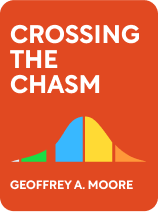

This article is an excerpt from the Shortform book guide to "Crossing the Chasm" by Geoffrey Moore. Shortform has the world's best summaries and analyses of books you should be reading.
Like this article? Sign up for a free trial here .
What is a product positioning statement? What is the purpose of writing a product positioning statement for your business?
A product positioning statement is a description of your target customers and the value you provide to them. Marketing and sales teams use the product positioning statement to inform customer messaging and ensure all communication is consistent.
Here are some tips on how to write an effective product positioning statement for your business.
What Is Your Positioning Claim?
To design an effective marketing campaign, you need to know what you want to communicate. Your message should be concise enough to pass the “elevator test,” that is, to explain to a stranger during an elevator ride.
A successful elevator pitch implies your message can be conveyed effectively by word of mouth. Furthermore, it’s simple enough to give customers and partner companies a clear picture of your product, so customers know what to expect and partners can see how your product would complement theirs.
| Has the Elevator Pitch Become Irrelevant? In his book To Sell is Human, Daniel Pink argues that the “elevator sales pitch” is no longer relevant. If Pink is right, then Moore’s elevator test becomes more of a hypothetical test instead of a practical one. Pink argues that the elevator pitch was designed to present condensed information to influential people who were difficult to gain a formal audience with long enough for a full sales presentation. However, according to Pink, executives are more accessible today, but are also overloaded with information. Thus, modern executives find impromptu, information-dense presentations both unnecessary and overwhelming. This does not undermine Moore’s point that your message needs to be simple and clear enough to be communicated by word of mouth, but if the format of effective word-of-mouth messages is changing, that could have implications for how you present your message. |
Writing Your Product Positioning Statement
Moore advises you to make a simple and definitive positioning claim for your product. He clarifies that your claim is not a slogan for your ad campaign, but rather a reference message that you design all of your marketing communications to agree with. He suggests you develop your claim by answering the following questions, expressing your answers in two or three sentences.
- What is your product name?
- Who are your target customers?
- What is your target customer’s compelling reason to buy your product?
- What is the market alternative you are seeking to displace?
- What is the product alternative?
- How are you as a company credible and reliable?
| Template for a Product Positioning Statement In Pitch Anything, Oren Klaff recommends introducing your product with a standardized statement to the effect of “For [you target customers] who are unsatisfied with [the market alternative], [your product name] provides [the customer’s compelling reason to buy]. Unlike [the product alternative], [your product name] provides [these key features].” A statement like this concisely captures your answers to Moore’s position questions, and Moore’s theory tracks closely to this template, providing a straightforward and clear way to communicate the most important aspects of your product.. In The One-Page Marketing Plan, Allan Dib provides a similar template for creating what he calls a “Unique Selling Proposition,” or USP. Dib emphasizes that a concise problem-solution statement that compares your product to the alternative is important for effective positioning. |

———End of Preview———
Like what you just read? Read the rest of the world's best book summary and analysis of Geoffrey Moore's "Crossing the Chasm" at Shortform .
Here's what you'll find in our full Crossing the Chasm summary :
- An explanation of the chasm phenomenon that many new high-tech products face
- How to pilot a product across this chasm to mainstream success
- The problems with the Technology Adoption Life Cycle (TALC) model






